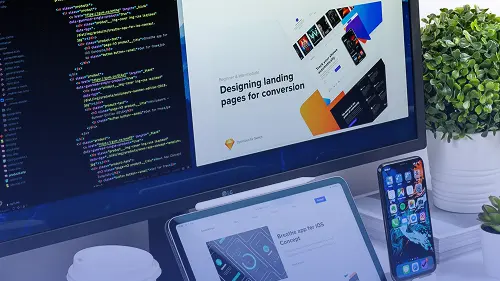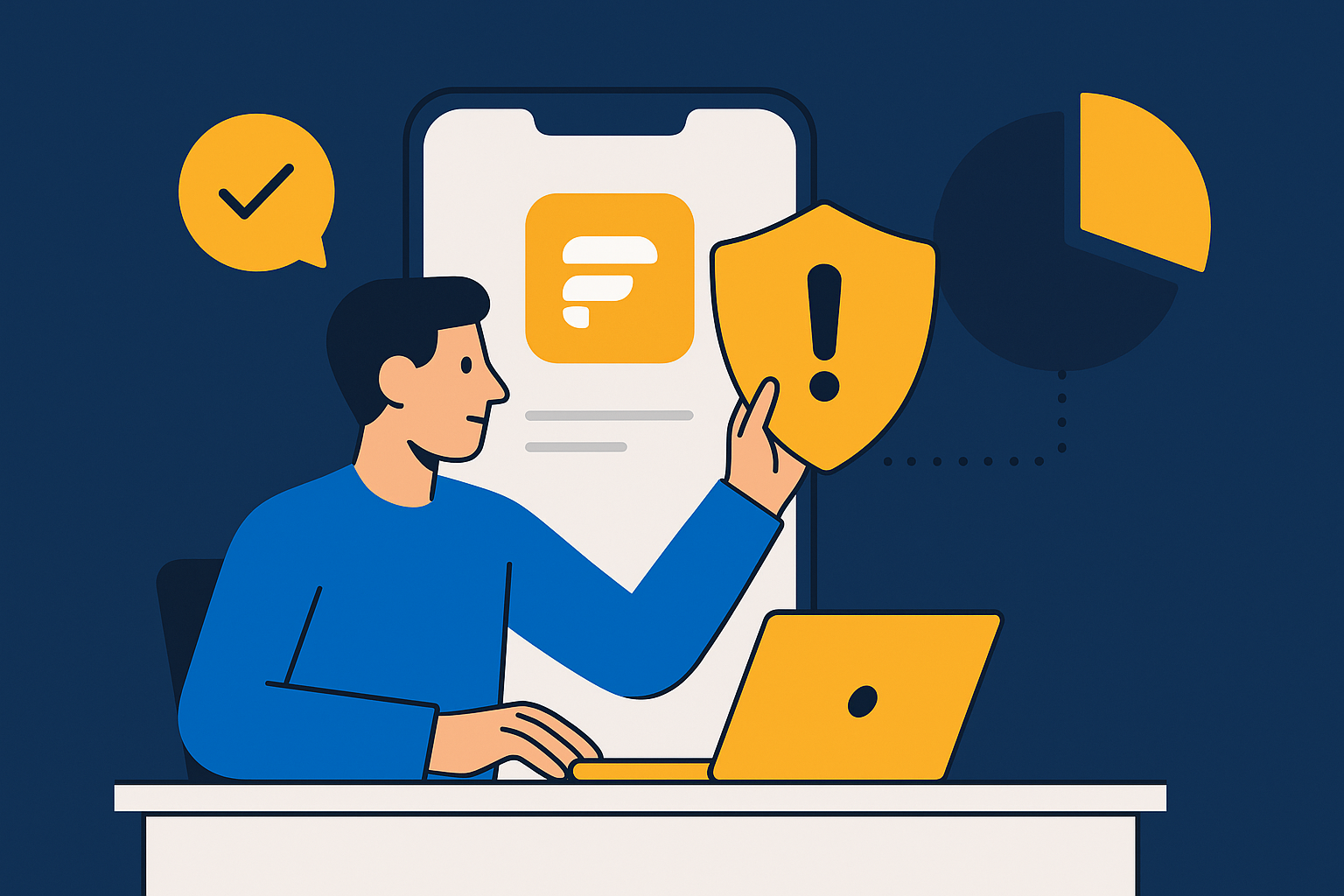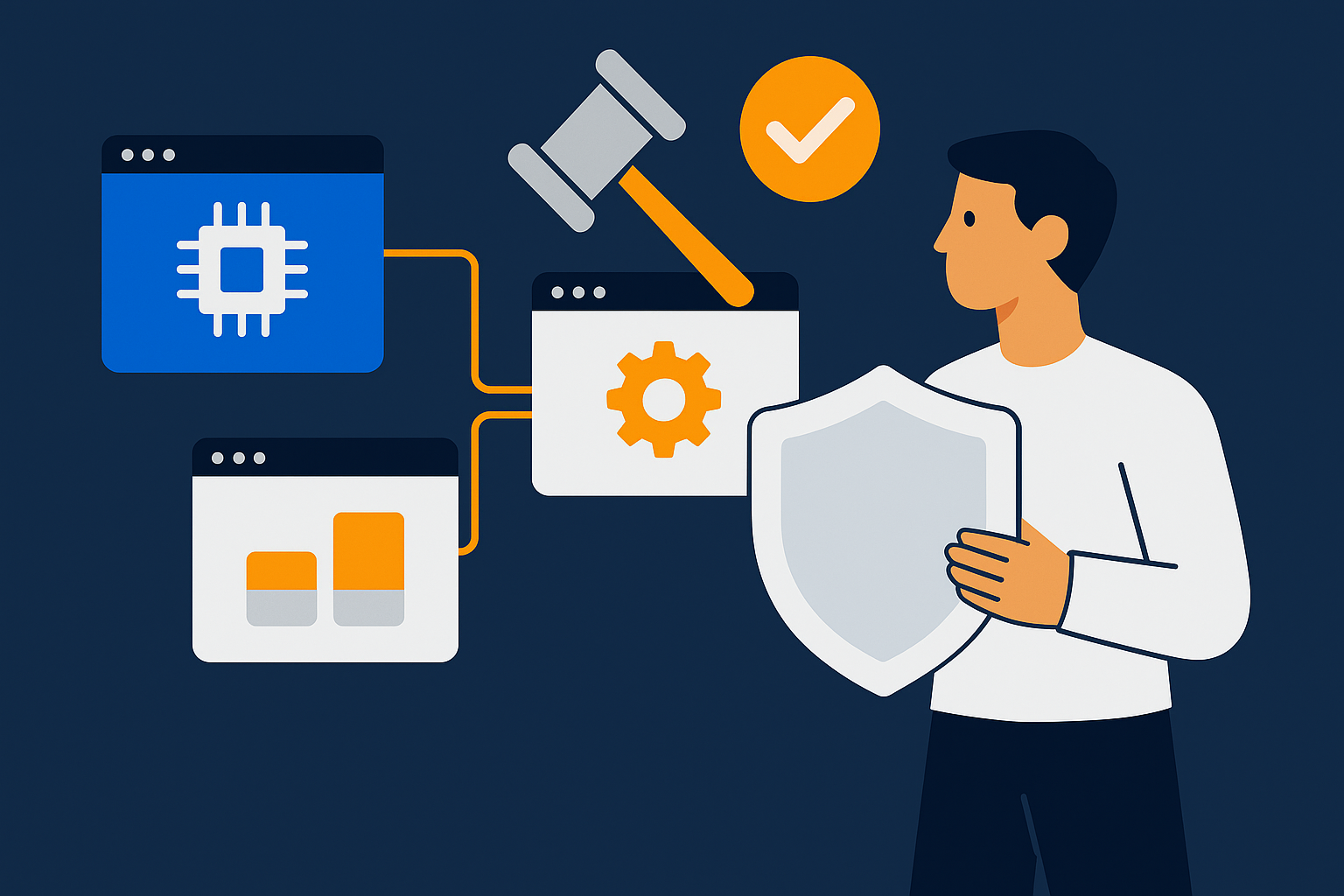Introduction
Selecting a partner for a complex web application is a high‑stakes decision. The right agency reduces risk, accelerates delivery, and aligns architecture and UX with your business model. The wrong choice can lock you into rigid tech, balloon costs, and stall launches. A precise, procurement‑ready RFP (request for proposal) is your best tool to attract serious, well‑matched proposals—and screen out the rest.
This article provides an executive‑grade RFP template specifically for custom web applications and adjacent needs like mobile app consulting, digital product design, and enterprise application development. You’ll get section‑by‑section guidance, a scoring model, and common pitfalls to avoid so your RFP elicits clear, comparable responses from qualified partners.
Whether you’re a C‑level leader defining a multi‑year roadmap, a product manager shepherding an MVP to market, or a marketing director coordinating a platform redesign, this framework helps you turn requirements into a market‑testable brief and make a confident agency selection.
Event/Performer Details
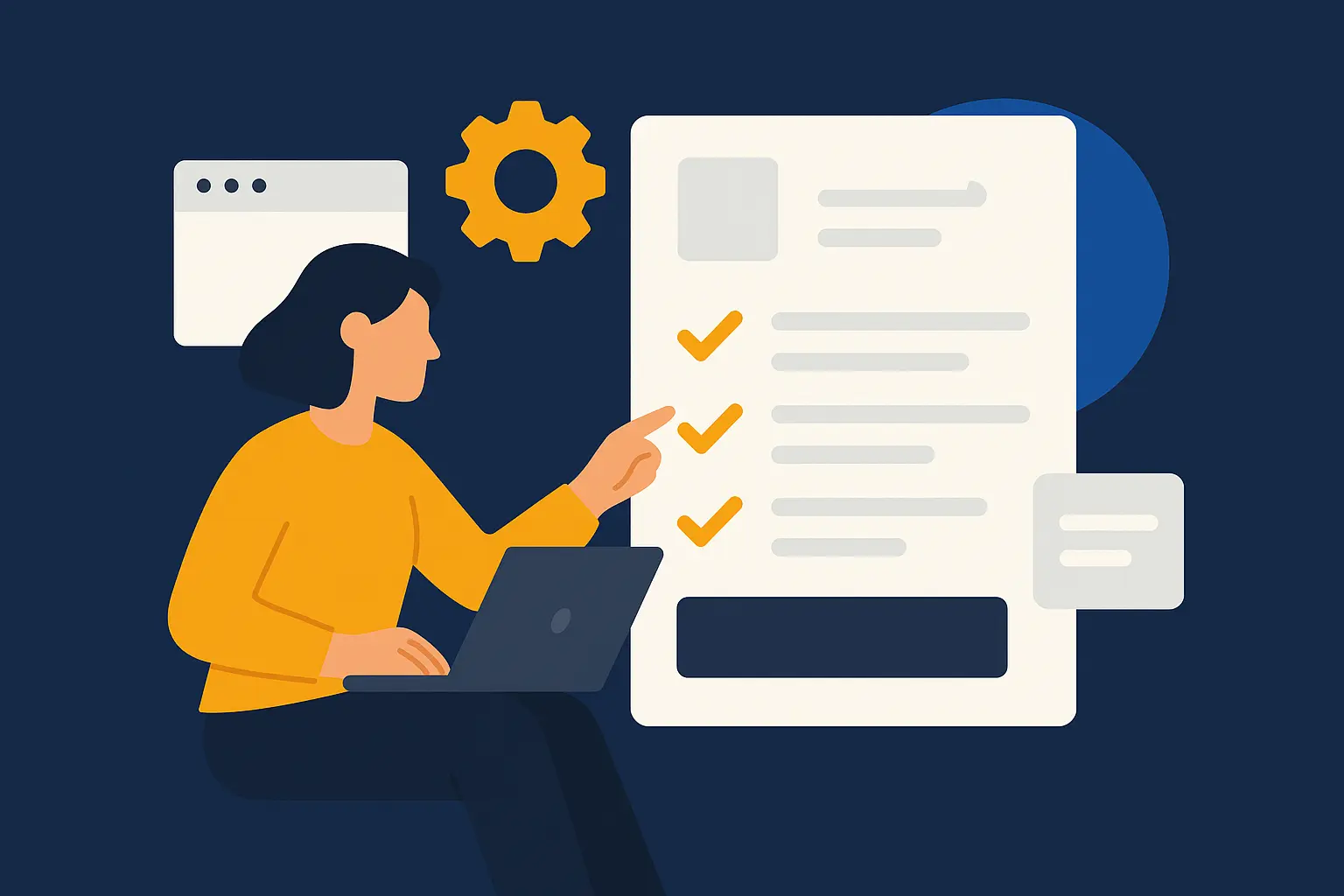
- Event title: Custom Web App RFP Template
- Format: Executive framework and checklist
- Intended audience: CIO/CTO, CPO/VP Product, Product Managers, Startup Founders, Marketing Directors
- Scope covered: Custom web app development, MVP development services, digital product design agency engagement, enterprise application development, mobile app consulting
- Deliverable: A reusable RFP structure with scoring criteria and submission requirements
Why You Shouldn’t Miss It
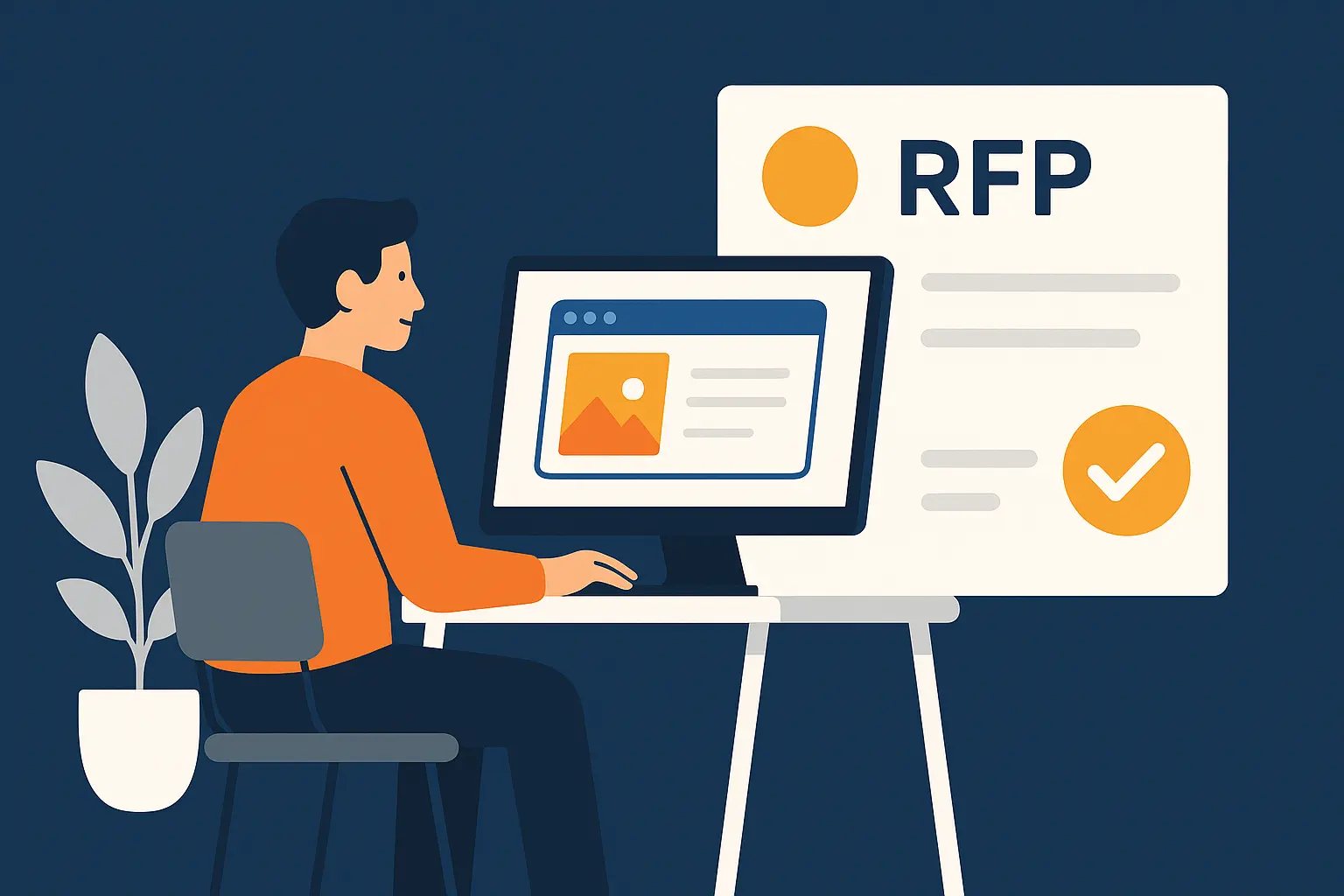
- Cuts evaluation time by 30–50% with a standardized structure vendors can follow.
- Improves proposal quality by clarifying technical, UX, and compliance expectations up front.
- Reduces risk via explicit non‑functional requirements, security, and data governance prompts.
- Enables apples‑to‑apples comparison with a weighted scoring matrix aligned to business outcomes.
- Attracts the right agencies—those experienced in your domain, scale, and architectural needs.
The executive RFP structure that attracts qualified proposals
A strong RFP balances clarity with flexibility. It provides enough context for accurate pricing and approach, yet leaves room for creative, experience‑driven solutions. Use the following sections as your table of contents.
1) Business context and objectives
- Strategic goals: What business outcomes should the software drive? Revenue, efficiency, compliance, NPS, market expansion?
- KPIs and target deltas: e.g., +20% qualified leads, −30% onboarding time, <2% crash‑free session deviation on mobile.
- Stakeholders and decision process: Identify the approvers and who evaluates technical, UX, and commercial fit.
- Constraints: Budget band, desired start date, time‑to‑market, fixed milestones (e.g., trade show, regulatory deadline).
Why it matters: Agencies tailor architecture and delivery to your outcomes. Clear goals prevent over‑engineering and misaligned roadmaps.
2) Product scope and user journeys
- High‑level feature set: Prioritized as Must/Should/Could/Won’t for Release 1.
- Primary user types and top journeys: Include screenshots or flow maps where possible.
- Content and data sources: CMS, ERP/CRM, analytics, third‑party APIs, data warehouses.
- Accessibility and localization: WCAG level, supported locales, right‑to‑left support.
Tip: Describe problems, not solutions. Invite vendors to propose better workflows and UI patterns.
3) Technical landscape and constraints
- Current stack: Languages, frameworks, databases, hosting, DevOps toolchain.
- Integration catalogue: Auth (SSO/SAML/OIDC), payments, messaging, internal services.
- Platform strategy: Web only, or web + mobile? Native (iOS/Android), cross‑platform (Flutter/React Native), or PWA?
- Data residency and privacy: Regions, retention, PII/PHI handling, audit needs.
Include any re‑use expectations (design system, shared services) to prevent re‑inventing core components.
4) Non‑functional requirements (NFRs)
- Performance: Response times, throughput, concurrency, offline needs.
- Reliability and SLOs: Availability targets, error budgets, recovery objectives (RPO/RTO).
- Security: Threat model highlights, OWASP alignment, pen‑test cadence, secrets management, SOC2/ISO constraints.
- Compliance: Industry specifics (e.g., HIPAA, PCI‑DSS, GDPR), audit trails, consent.
- Scalability: Expected growth, multi‑tenant strategy, sharding/partitioning expectations.
- Observability: Logging, metrics, tracing, dashboards, alerting.
NFRs are often the silent failure point in proposals. Make them explicit to surface realistic plans and costs.
5) UX/UI and product design expectations
- Discovery inputs: Research assets you can share (personas, heatmaps, interview notes).
- Design system: Existing components, tokens, accessibility standards, or need to create one.
- Validation loops: Usability testing cadence, prototype fidelity, decision criteria.
- Content strategy: Information architecture, microcopy tone, localization workflows.
Signal whether you need a digital product design agency to lead discovery, or if design will collaborate with an internal team.
6) Delivery model and collaboration
- Engagement style: Agile scrum/kanban, dual‑track discovery/delivery, milestones.
- Cadence: Demos, planning, reviews, stakeholder touchpoints.
- Team topology: Roles you expect from the agency (tech lead, PM, designers, QA, DevOps).
- Knowledge transfer: Documentation standards, handover plan, training, and warranty.
This is where you align on ways of working to avoid “process mismatch” once the project starts.
7) Release plan and environments
- Environment strategy: Dev, QA, Staging, Production; data masking and refresh policies.
- CI/CD expectations: Branching model, pipelines, automated tests, blue‑green/Canary deploys.
- Launch criteria: Definition of ready/done, quality gates, rollback plan.
Clarity here reduces late surprises and supports predictable releases.
8) Proposal format and what to include
Ask every vendor to respond with the same structure:
- Executive summary: Understanding of goals and risks.
- Approach: Architecture, UX/design, delivery plan, and rationale.
- Team bios: Named individuals, relevant case studies, location/time zone.
- Timeline: Phased plan with dependencies and critical path.
- Pricing: Fixed, time‑and‑materials, or hybrid; what’s included/excluded; change control.
- Assumptions: Access, third‑party costs, licensing.
- Risks and mitigations: Top 5 risks and how they will manage them.
- References: Similar engagements and outcomes.
Uniform responses enable true comparability.
9) Scoring matrix (weighted evaluation)
Define weights based on your priorities; example:
- Technical approach and architecture – 25%
- UX/UI and product strategy – 20%
- Team experience and case relevance – 20%
- Delivery model and communication – 15%
- Security, compliance, and NFR depth – 10%
- Commercials (value, transparency, flexibility) – 10%
Create a 1–5 scale rubric for each criterion with clear descriptors. Share the matrix in the RFP so vendors optimize for what you value, not just the lowest price.
10) Legal, IP, and procurement readiness
- IP ownership: Work‑for‑hire vs. licensing; third‑party components policy.
- Data processing: DPA, sub‑processor transparency, breach notifications.
- SLAs and support: Post‑launch coverage, response times, escalation paths.
- Insurance and certifications: Coverage limits, evidence, and audit rights.
Set expectations early to avoid protracted redlines later.
Practical Information
Use this timeline and checklist to run a tight, fair process from market outreach to selection.
Recommended timeline
- RFP release: Day 0
- Vendor Q&A window: Days 3–10 (collect questions; publish consolidated answers to all vendors)
- Optional discovery workshops: Days 10–15 (short paid or free sessions to test collaboration)
- Proposal due: Day 21
- Finalist demos and technical deep dive: Days 24–28
- Reference checks and security review: Days 28–32
- Selection and contracting: Days 33–40
- Project kickoff: Days 45–60 (allow for legal/procurement and resource alignment)
Submission requirements
- Page limit: 20–30 pages plus appendices
- Format: PDF with accessible text, links to demos or prototypes where relevant
- Estimate fidelity: Provide cost bands for discovery, MVP, and scale‑up phases
- Assumption log: Explicit list so you can compare proposals realistically
Stakeholder roles
- Executive sponsor: Approves budget and final selection
- Product lead: Owns scope and prioritization
- Technical lead: Evaluates architecture, security, and integration approach
- Design lead: Evaluates UX strategy and research plan
- Procurement/legal: Commercials, contracts, and risk
Shortlist tips
- Prioritize relevant case studies over brand logos in different domains.
- Look for pragmatic architecture that aligns with your lifecycle (MVP now, scale later).
- Check that the proposed team includes the people you will actually work with, not just leadership.
Pricing models to consider
- Fixed price for discovery and MVP with change control
- Time‑and‑materials for iterative development with guardrails (monthly cap, sprint goals)
- Hybrid: Fixed discovery + capped Agile for delivery; performance incentives for hitting specific outcomes
Choose the model that matches your certainty level. If requirements are still evolving, favor flexibility with clear governance.
Risk checklist (include in your RFP)
- Single point of failure: Named tech lead and deputy?
- Knowledge capture: Living architecture docs and decision records?
- Vendor lock‑in: Open standards, portability, and exit plan?
- Security posture: Threat modeling, dependency scanning, and pen testing in scope?
- Performance and scale: Load testing strategy and SLOs aligned to business usage?
- Compliance: Data mapping, consent, and audit logs included?
Add‑ons for mobile and multi‑platform strategy
If you anticipate mobile needs, extend the RFP with:
- Platform choice rationale: Native vs. cross‑platform vs. PWA, referencing your user journeys.
- Offline and sync: Conflict resolution, storage limits, and encryption.
- App store operations: Release cadence, review guidelines, and feature flagging.
This ensures proposals address the full lifecycle—from web application core to mobile experience, where relevant.
Sample prompts to include in your RFP
Use these prompts verbatim or adapt for your context:
- “Propose an architecture that supports an MVP in 12–16 weeks with a clear path to support 10× user growth without re‑platforming.”
- “Describe your approach to UX research given we can provide 12 enterprise user interviews and analytics access.”
- “Outline your observability stack and how product, engineering, and leadership will consume insights.”
- “Provide two alternative pricing options and explain the trade‑offs.”
- “List the top three risks in our scenario and how you’ll mitigate each.”
Common pitfalls and how to avoid them
- Over‑specifying the solution: You’ll stifle better approaches. State goals and constraints; invite options.
- Ignoring NFRs: Performance, security, and compliance drive real‑world cost and feasibility. Make them first‑class.
- Vague data requirements: Specify sources, quality, and ownership to avoid rework.
- Choosing solely on price: Low bids often omit NFRs, QA, or senior time. Use the scoring matrix to maintain balance.
- No clear acceptance criteria: Define what “done” means per milestone to protect timelines and budget.
Example scoring rubric (abbreviated)
1 = Major concerns; does not meet expectations
3 = Meets expectations; minor risks
5 = Exceeds expectations; de‑risks and advances goals
Apply the rubric to each weighted criterion, then calculate a total score. Keep qualitative notes for steering committee decisions.
What vendors need from you to estimate accurately
- Access to at least one technical stakeholder who knows the current systems.
- Realistic sample data or anonymized schemas.
- Early confirmation of dependencies (e.g., identity provider, CRM, payment gateway).
- Decision cadence: Who decides, how often, and on what basis.
Provide these, and proposals will shift from guesswork to grounded plans.
Conclusion
A precise RFP is more than a document—it’s your operating system for selecting the right custom web app development agency and setting the engagement up for success. By aligning business outcomes, UX strategy, architecture, and delivery expectations up front, you invite thoughtful, comparable proposals and drastically reduce selection risk. Use this template as‑is, or lean on our team to tailor it to your domain, compliance landscape, and growth targets.
Ready to turn this into a procurement‑ready package with a scoring matrix, vendor Q&A facilitation, and a discovery plan? Contact CoreLine’s experts today for a tailored RFP and a short‑list of agencies fit for your product.
